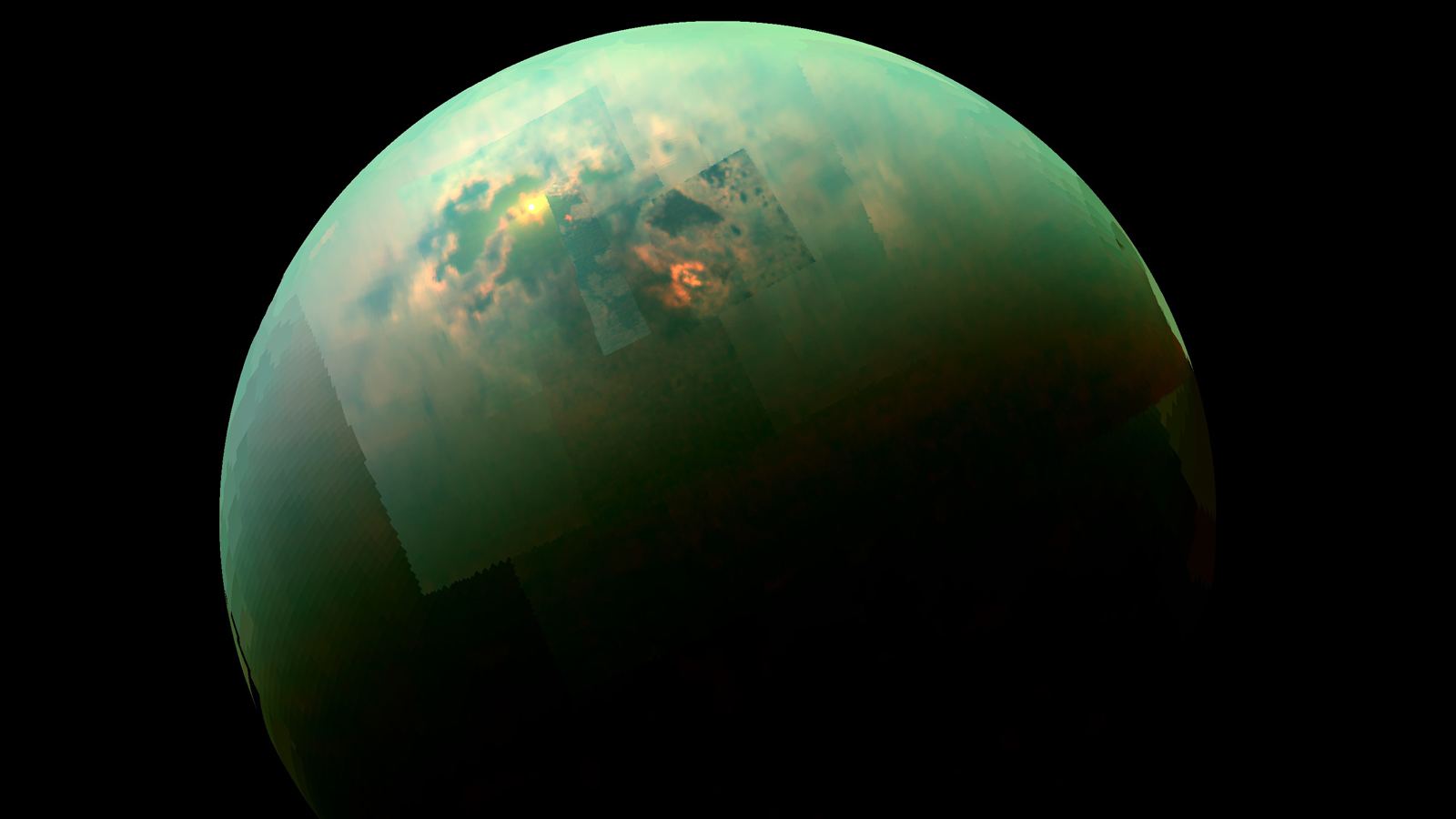Scientists have made breakthrough discoveries that reveal the complex chemistry behind Titan’s thick, organic-rich atmosphere—offering new insights into the moon’s dynamic weather, prebiotic processes, and even parallels to early Earth.
Key Points at a Glance:
- Titan’s atmosphere is primarily nitrogen with traces of methane, forming a unique organic haze.
- Photochemical reactions driven by sunlight create complex organic molecules.
- Laboratory simulations and spacecraft data have unlocked new insights into Titan’s atmospheric dynamics.
- Findings may shed light on prebiotic chemistry and conditions similar to early Earth.
- Advanced instruments and models are enhancing our understanding of extraterrestrial atmospheres.
Titan, Saturn’s largest moon, has long fascinated scientists with its dense, orange-hued atmosphere—a sprawling blanket composed mostly of nitrogen, with significant amounts of methane and other trace gases. Recent research has now unlocked several long-held mysteries about this enigmatic world, revealing how complex photochemical reactions lead to the formation of Titan’s characteristic organic haze.
For decades, the Cassini mission and Earth-based observations have provided tantalizing clues about the processes occurring in Titan’s atmosphere. However, many aspects of its chemical makeup and dynamic behavior remained elusive. In a groundbreaking study, researchers combined advanced remote-sensing data with innovative laboratory simulations to recreate Titan’s atmospheric conditions. By doing so, they were able to observe firsthand the intricate reactions that occur when sunlight interacts with methane and nitrogen, resulting in the formation of heavy organic compounds.
At the core of these reactions is the process of photolysis—where ultraviolet radiation from the sun breaks down simple molecules into reactive fragments. These fragments recombine in complex ways, gradually building up into larger, more complex organic molecules. The resultant compounds condense to form aerosols, which accumulate to create the thick, pervasive haze enveloping Titan. “Our experiments indicate that the organic haze isn’t just a passive layer,” explains Dr. Jane Doe, a leading planetary scientist involved in the study. “It actively participates in Titan’s atmospheric dynamics, influencing temperature gradients and even surface chemistry.”
The research team utilized a state-of-the-art thermochemical reactor to simulate the low temperatures and pressures found on Titan. By introducing a carefully calibrated mix of methane and nitrogen, and subjecting the mixture to ultraviolet radiation, they successfully mimicked the moon’s upper atmospheric conditions. The laboratory results closely matched the spectral data obtained from spacecraft, confirming that the complex network of reactions observed in the controlled environment also occurs naturally on Titan.
One of the most exciting aspects of this study is its potential relevance to the origins of life. Titan’s atmosphere, with its rich organic chemistry, has often been compared to the primordial conditions of early Earth. The study’s findings bolster the idea that similar photochemical processes could have played a role in prebiotic chemistry, setting the stage for the development of life. Although Titan itself is too cold and inhospitable for life as we know it, understanding its chemical pathways provides a valuable window into the early evolutionary history of our own planet.
In addition to enhancing our understanding of Titan, the study has broader implications for the field of planetary science. The methods developed to analyze and simulate Titan’s atmosphere can be applied to other celestial bodies with dense, complex atmospheres—ranging from exoplanets orbiting distant stars to other moons in our solar system. This cross-disciplinary approach, blending observational astronomy, laboratory chemistry, and advanced modeling techniques, exemplifies the future of space research.
The implications extend even further. By unlocking the secrets of Titan’s organic haze, scientists can refine models of atmospheric evolution and better predict the behavior of other worlds. These insights may eventually inform the design of future missions aimed at probing the habitability of extraterrestrial environments, as well as the search for biosignatures on distant exoplanets.
In summary, the latest research into Titan’s dense atmosphere has not only demystified the formation of its iconic haze but has also provided crucial insights into the broader mechanisms governing planetary atmospheres. As scientists continue to unravel these cosmic secrets, Titan remains a key natural laboratory—one that deepens our understanding of the chemical processes that might have once set the stage for life on Earth and continue to shape the evolution of worlds across the universe.
